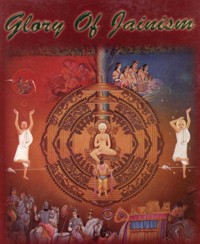Lakshmipati
There lived, in the city of Dhara in Malwa, a rich Shravak called Lakshmipati. He was a successful businessman. As a highly religious person, Lakshmipati was a philanthropist and whosoever came to his house, would not return empty-handed. Once Shridhar and Shripati, sons of a pandit (scholar) Krishnagupta of Benaras, happened to be in Dhara. The two were highly intelligent and well-versed in all branches of knowledge. They had a retentive memory and had studied all the Vedas (the oldest sacred books of the Hindus). They had set out on a pilgrimage. When they came to the house of Lakshmipati, he warmly welcomed them and offered alms. During their stay in the city Shridhar and Shripati often visited Lakshmipati’s house for alms. Lakshmipati did not maintain accounts books. The walls of his palace were literally his accounts books for all the accounts were written out on these walls. Shridhar and Shripati happened to read the accounts during their visits, and with their retentive memory, remembered all facts and figures.
Once a big fire broke out in Lakshmipati’s house and his furniture and all his belongings were reduced to ashes. The walls had turned black and now it was difficult to read the accounts written on them. Poor Lakshmipati had become a pauper overnight and he did not know what to do. He did not know as to how much did the people owed to him. He sa.t helplessly cursing his fate, when the two brothers came for alms. They saw the house reduced to ashes in an instant and the enormous loss suffered by Lakshmipati. The brothers told him that they could tell him every detail of the accounts they had read on the walls. Since their memory was sharp, they had remembered each and every detail. A smile flickered on Lakshmipati’s face and he began writing the accounts as dictated by the two brothers from their memory. His gloom disappeared and he thanked the two brothers. Lakshmipati thought how much benefit would accrue to his religion if such knowledgeable persons embraced Jainism and became monks to propagate the message of Jain religion. He took them to Acharya Vardhamansuriji. Acharya Vardhmansuriji explained the significance of Jain religion. It is a way of life that enlightens the lives of the people. Religion is a matter of heart and not of what lies outside one’ sown being.
Acharya Vardhamansuriji said: „How many tattvas (reals, regarded as objects of faith for a Jaina) are there in the world? There are two fundamental tattvas - the sentient and the insentient. There is no third fundamental real besides these two. They exhaust the entire universe. They are known by the common term 'substance'“. From the spiritual standpoint seven more tattvas are derived from these two, thus making the total of nine tattvas (nav tattvas). Liberation being the ultimate goal to be achieved by living beings. Those things whose understanding is absolutely necessary for the attainment of liberation are here considered to be tattvas. So the Jain thinkers have exhaustively explained these nine tattvas. The Acharya’s scholarship and detachment touched the two brothers and they became his disciples. They studied the scriptures and with the passage of time they came to be known as Acharya Jineshwarsuriji and Acharya Buddhisagarsuriji. The life of Lakshmipati reflects his devotion to Jain shasan (Jain order). He was instrumental in the making of many a great Acharya and his service to the cause of religion is legendary. He firmly believed that any help for a religious cause would lead one to the path of well-being. Devotion to religion, therefore, must spring eternally in human heart. Religion is a way of life and it should be woven inextricably into one’s life.
 Dr. Kumarpal Desai
Dr. Kumarpal Desai

